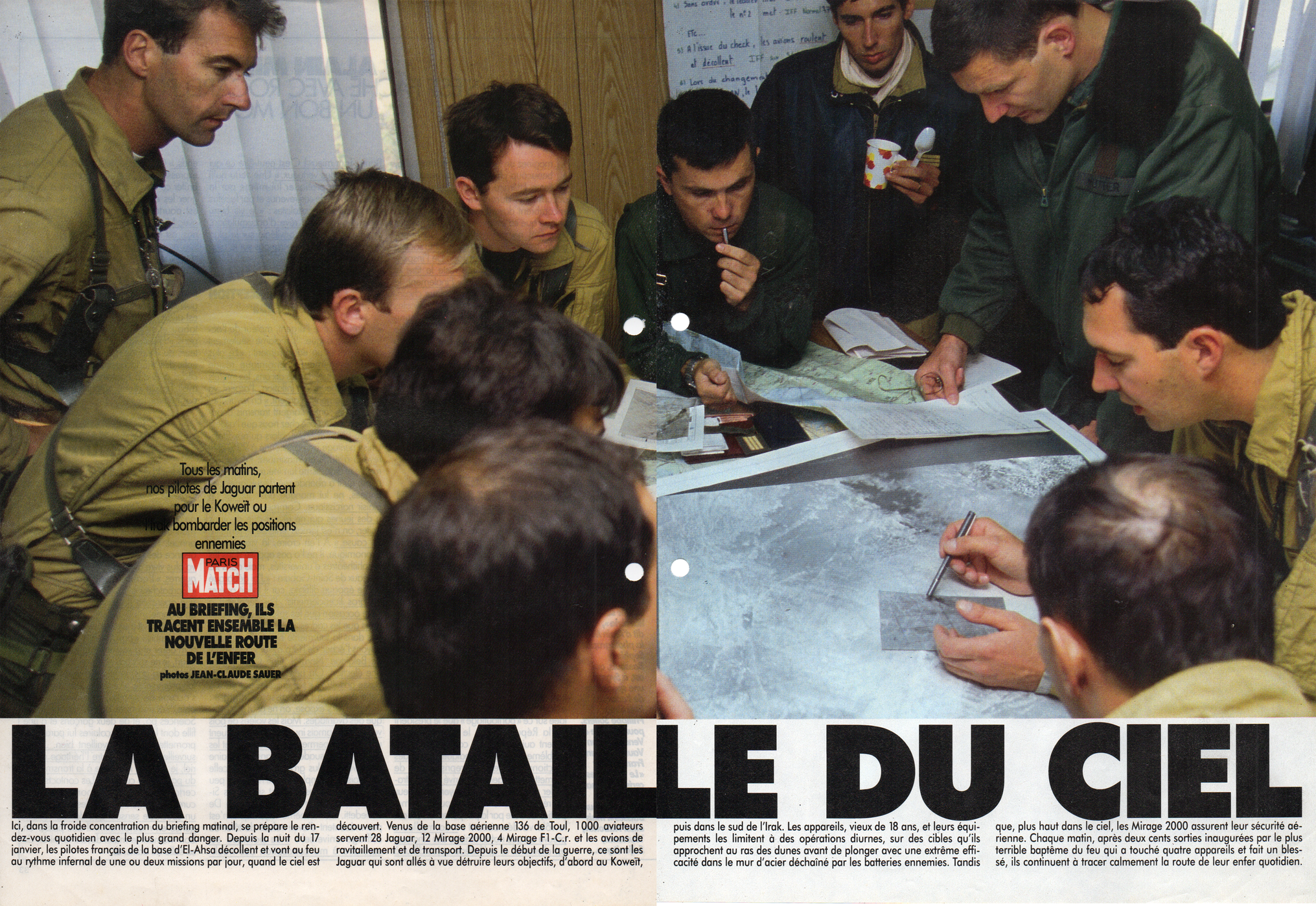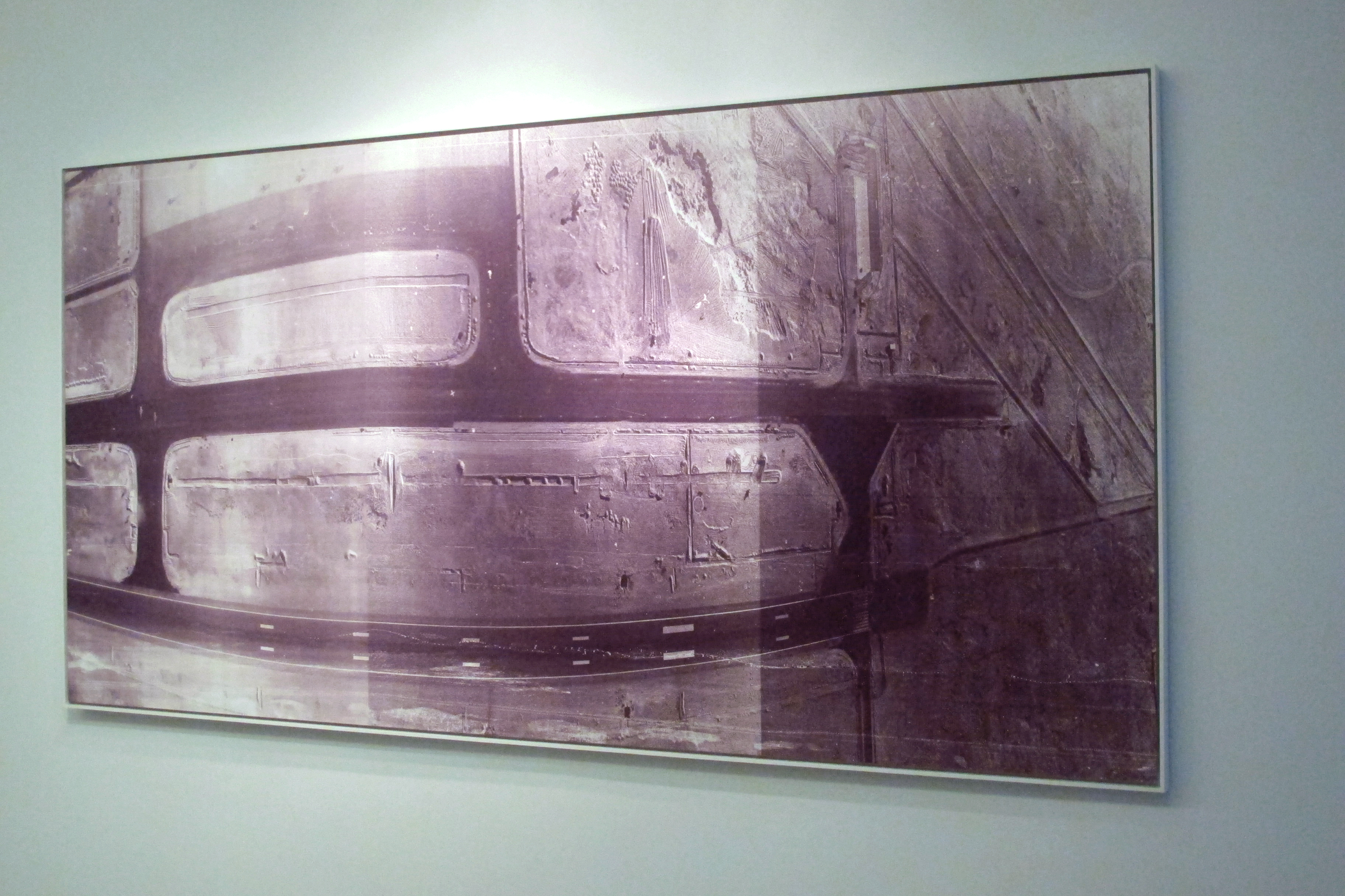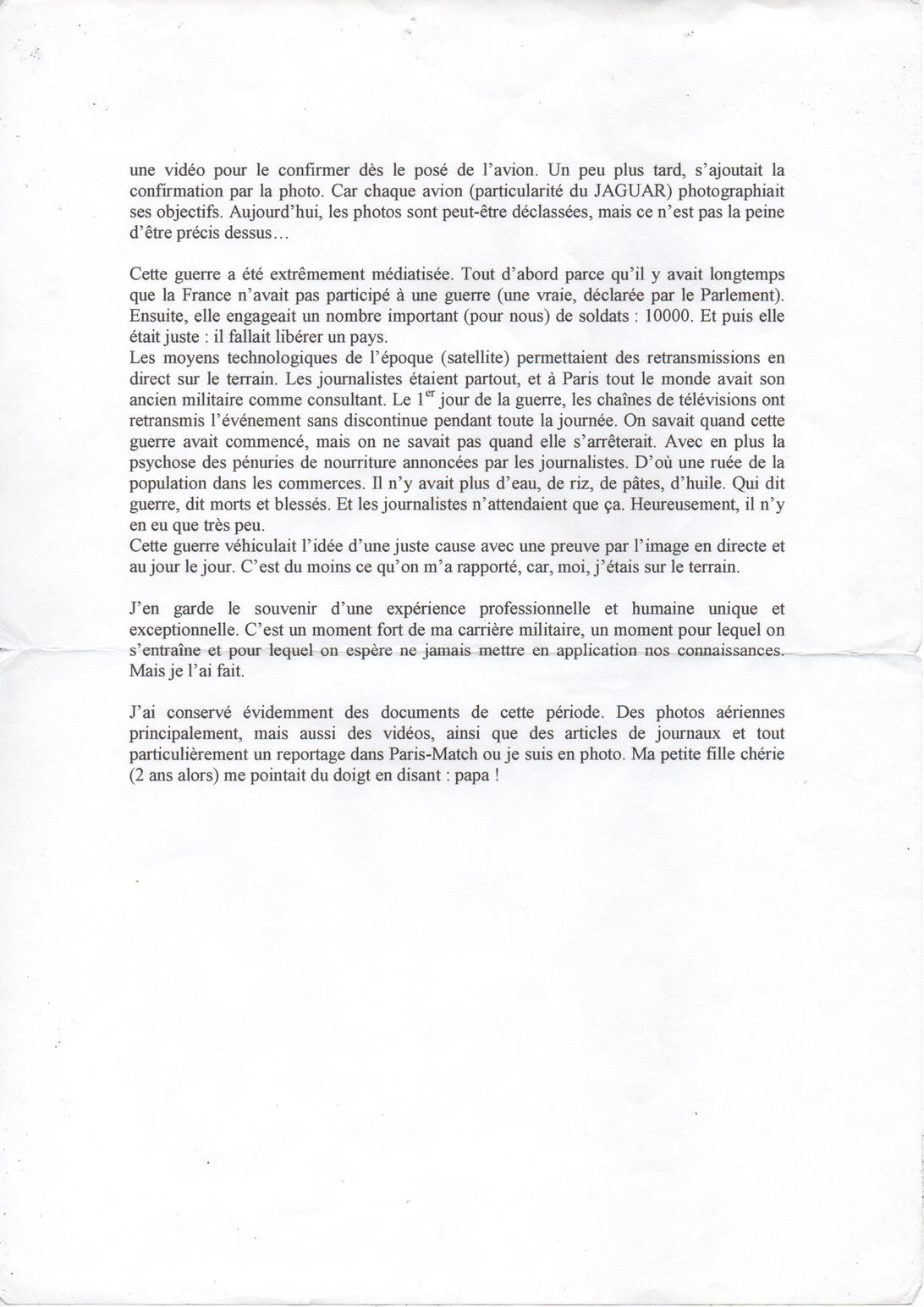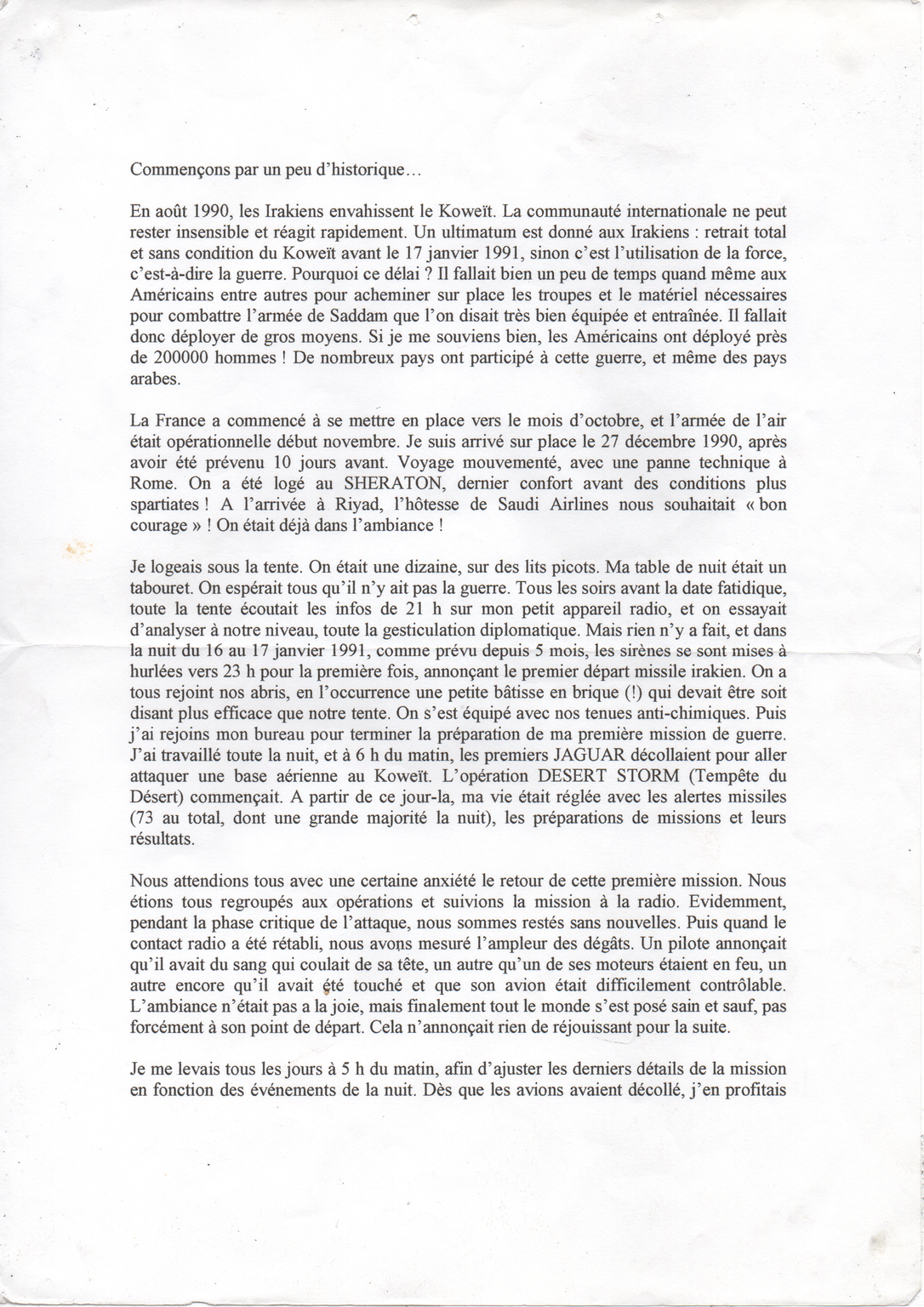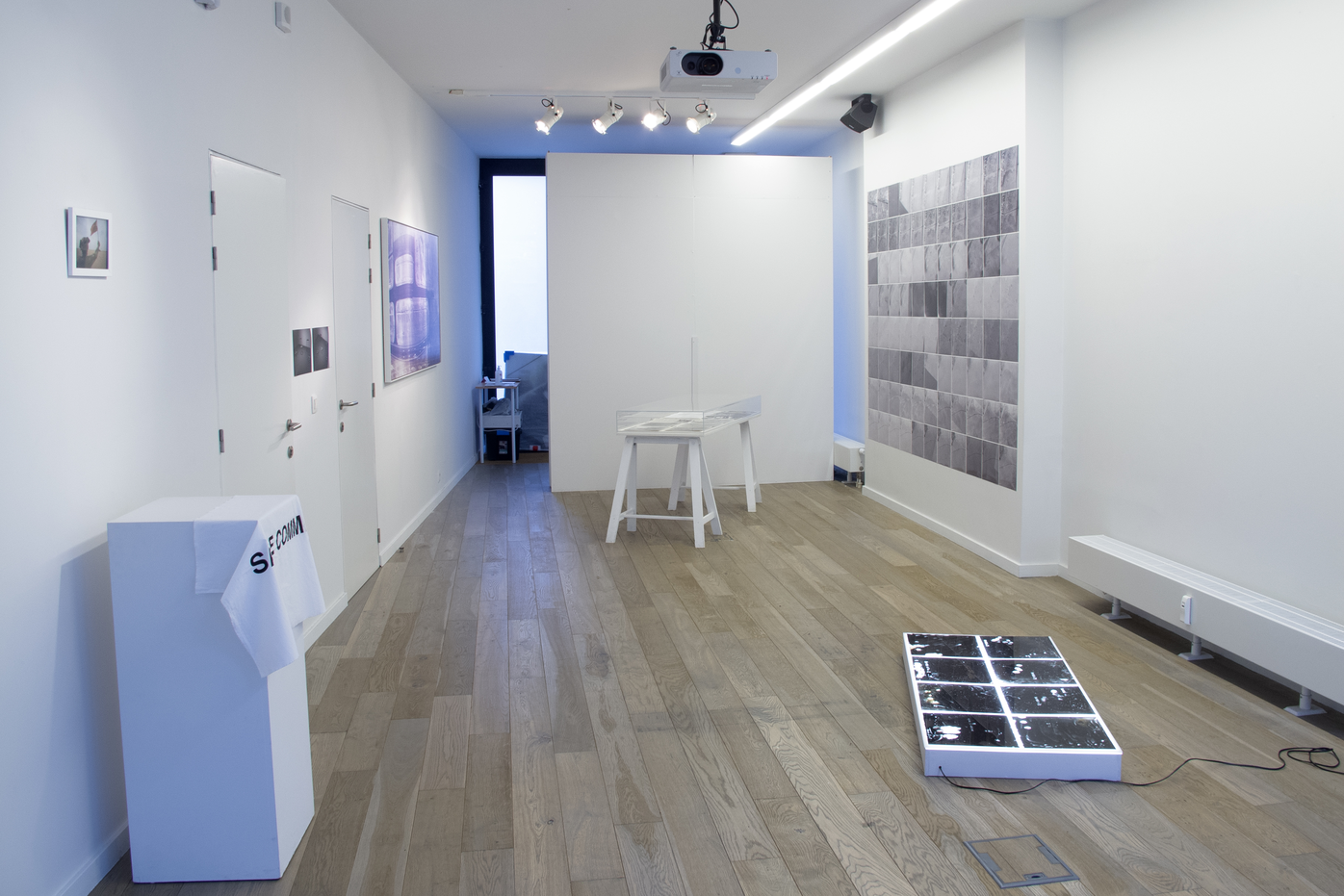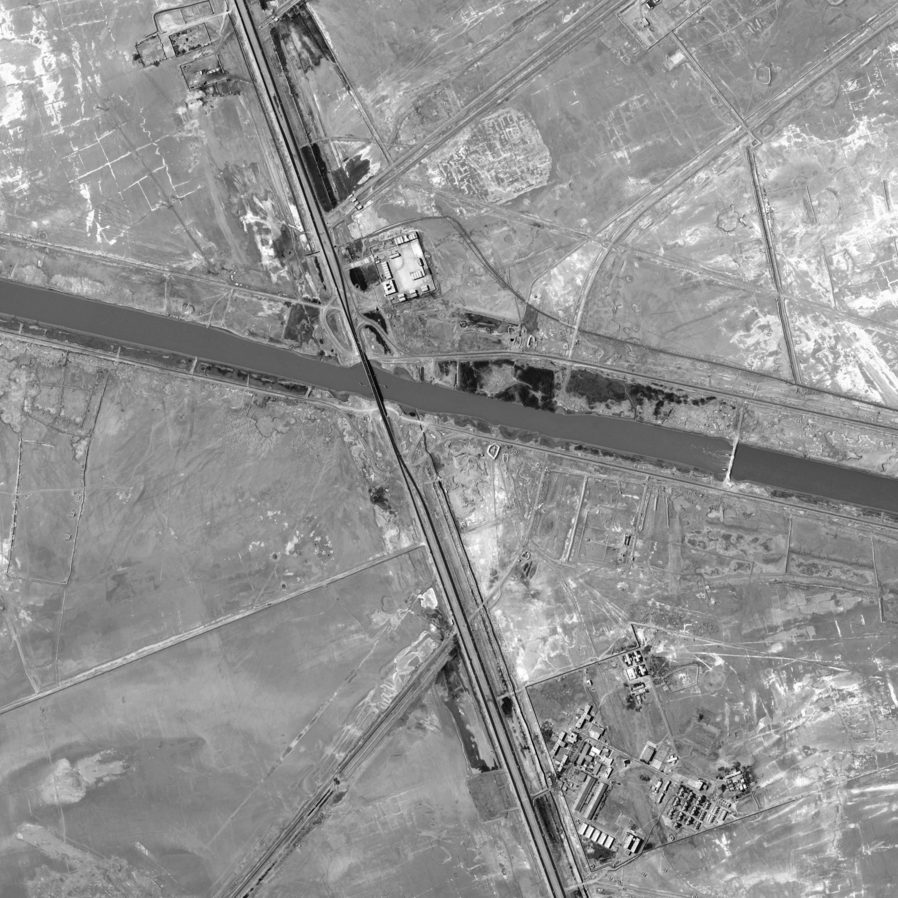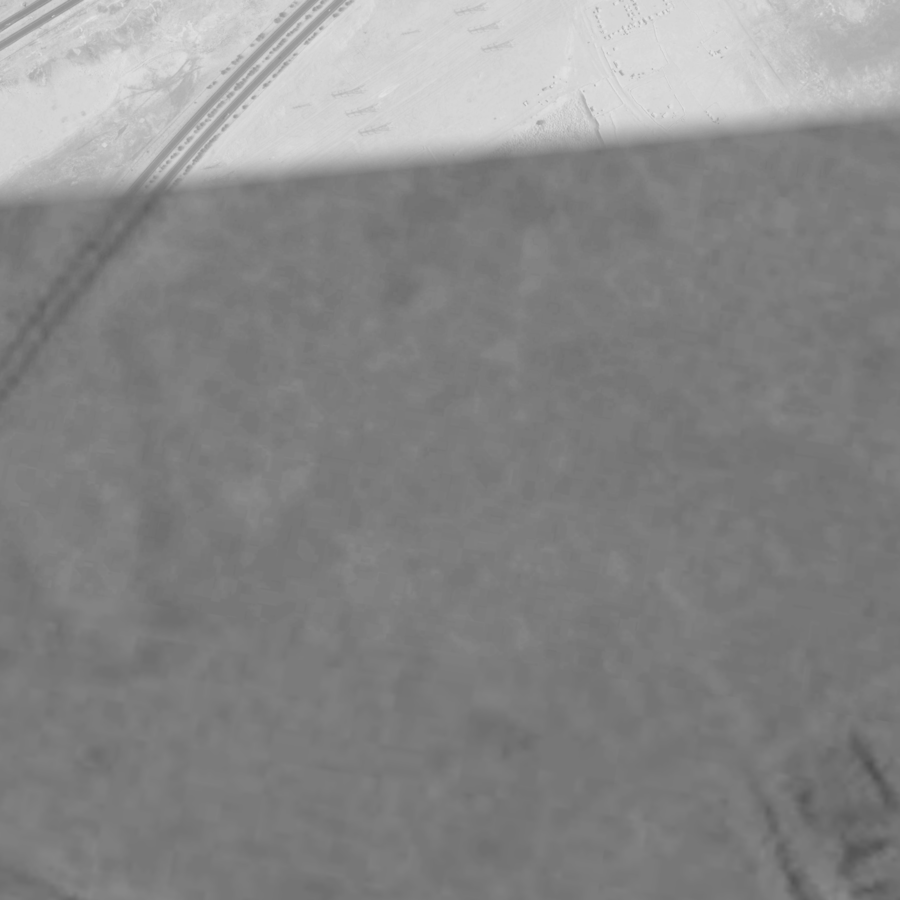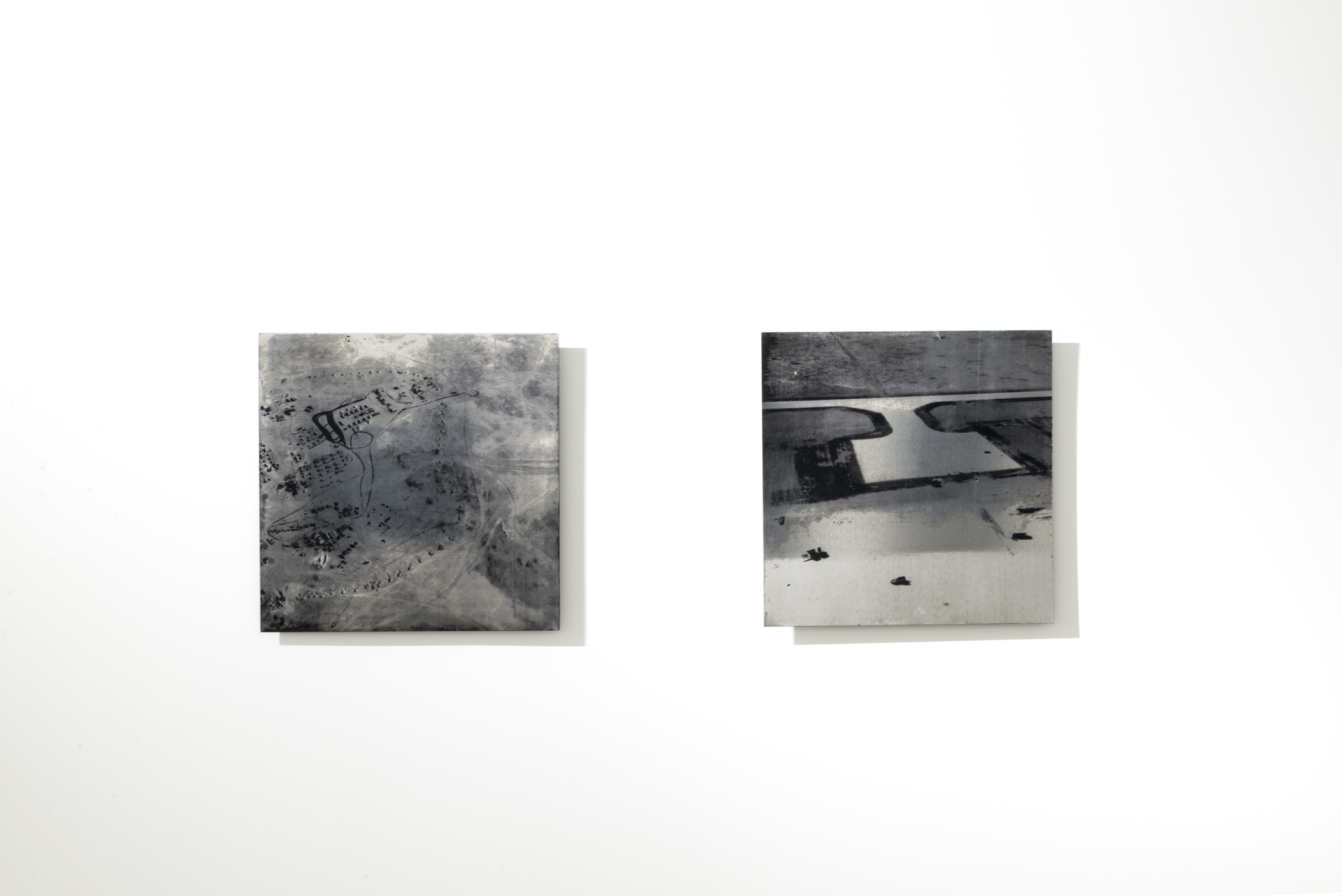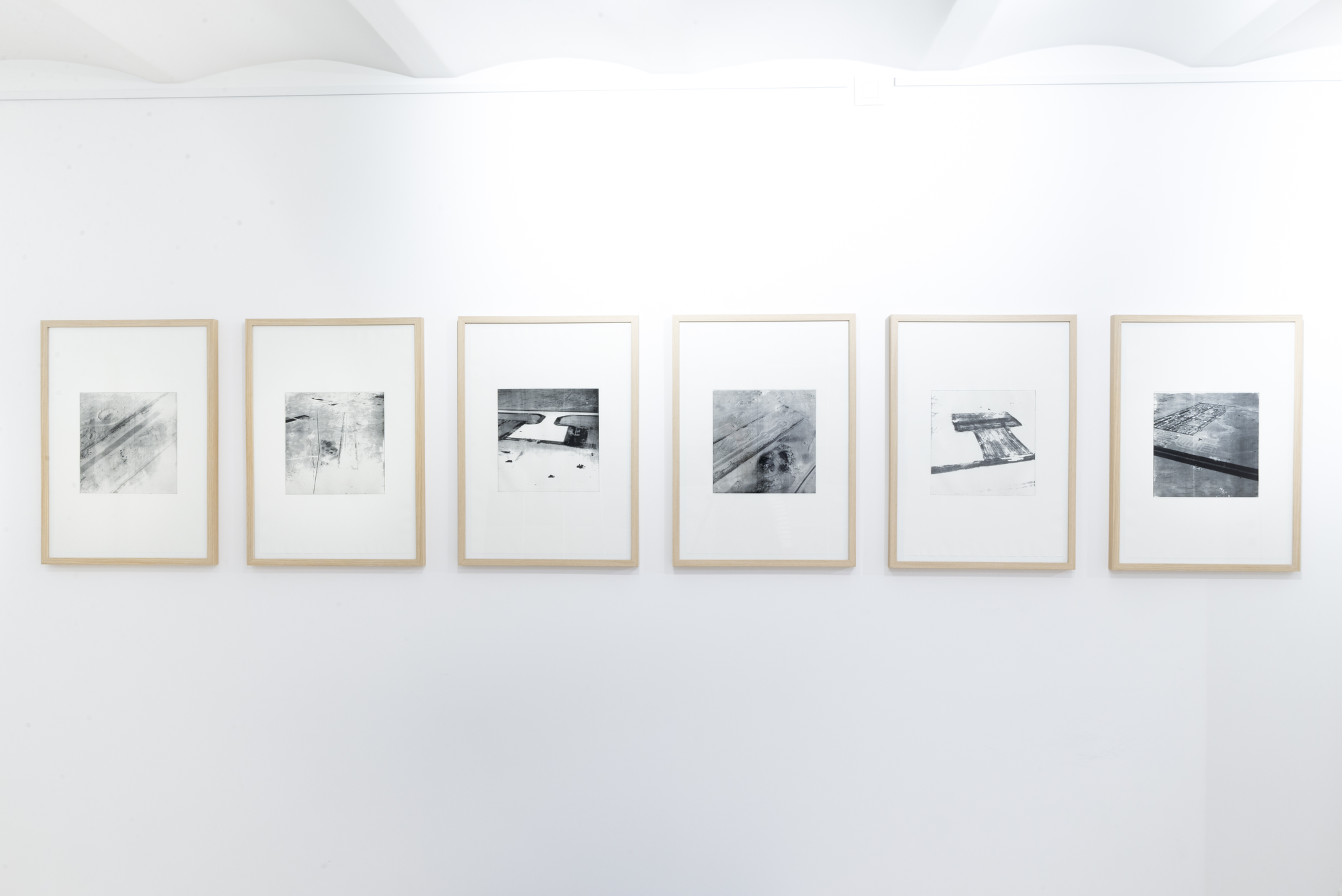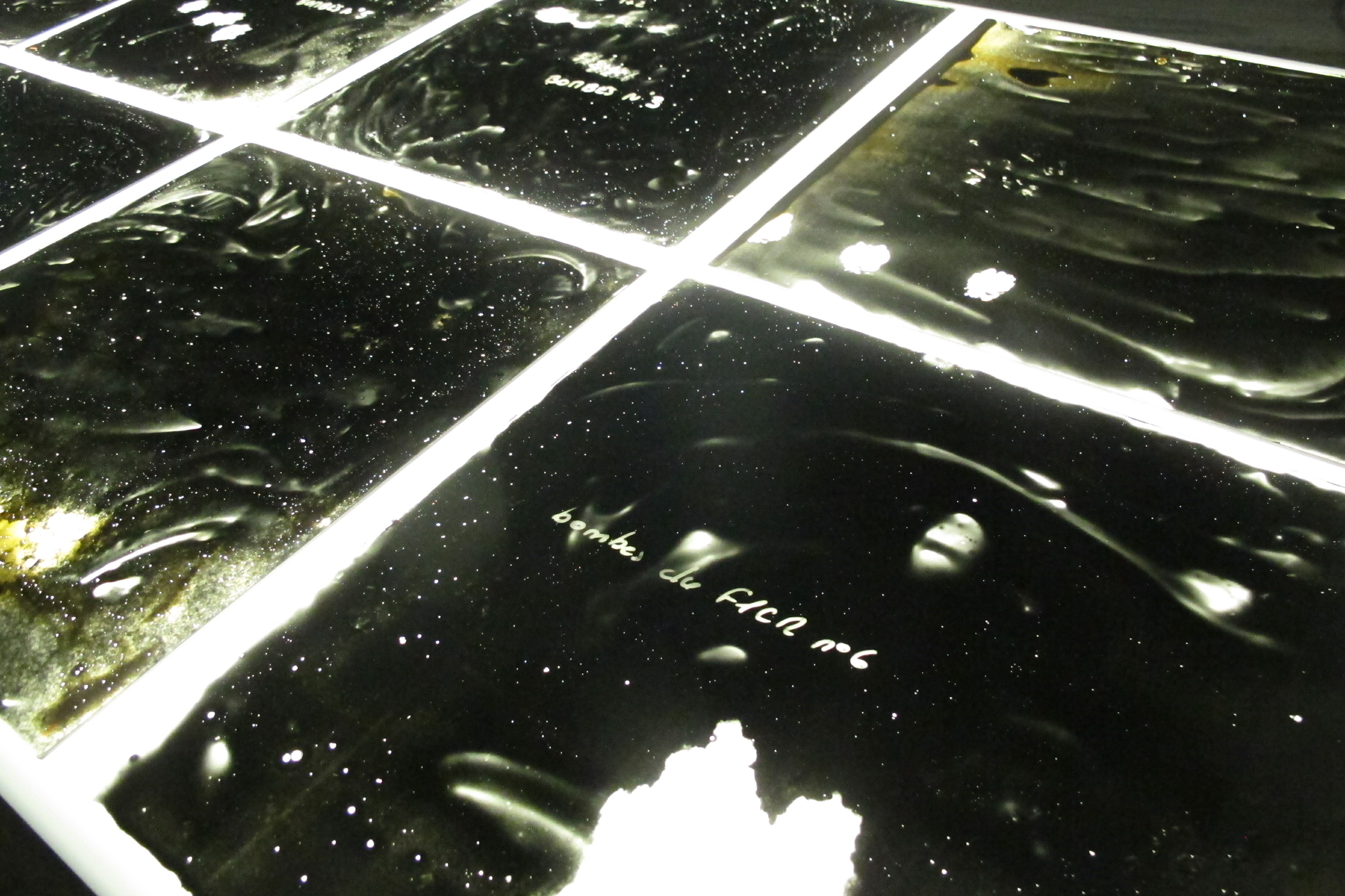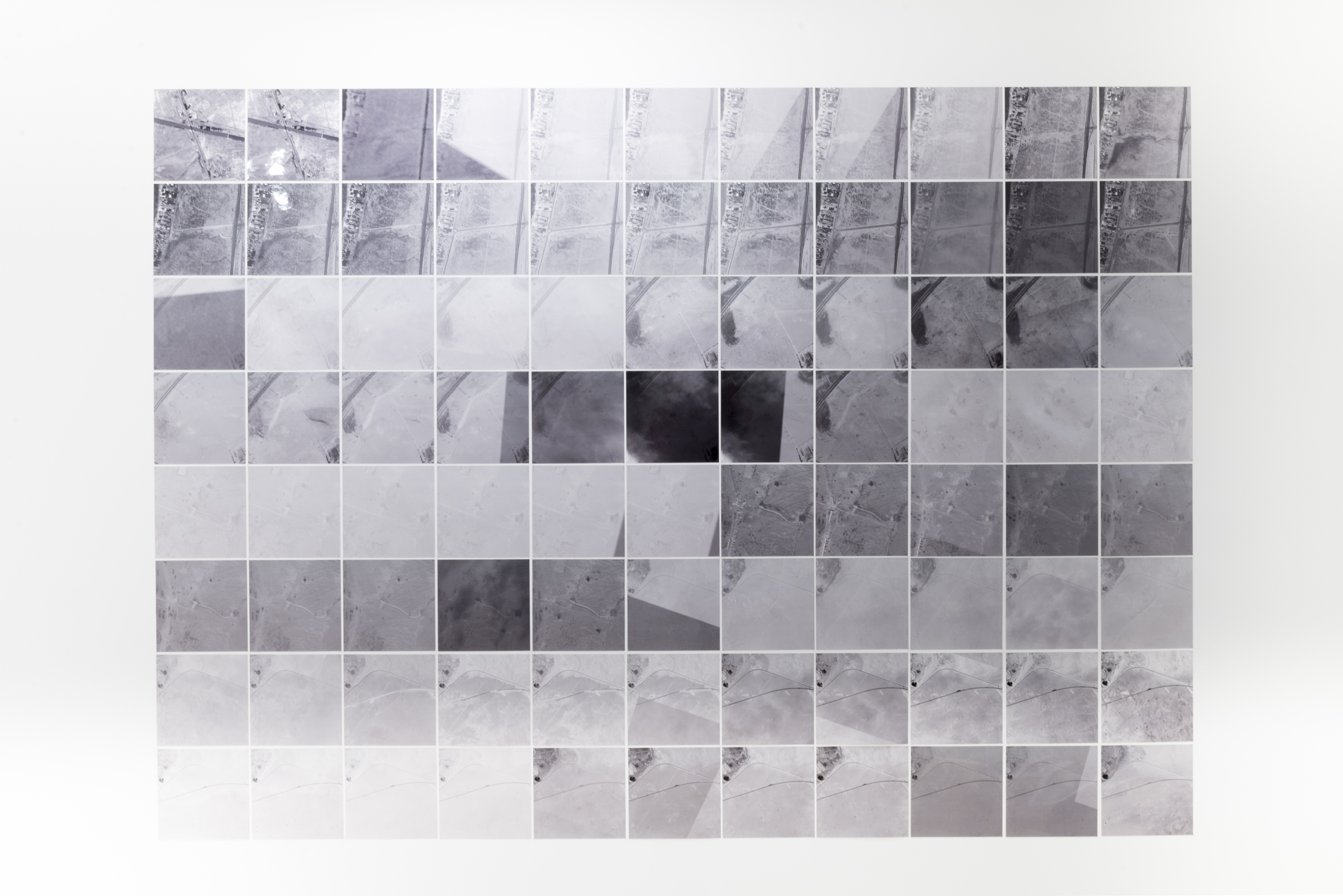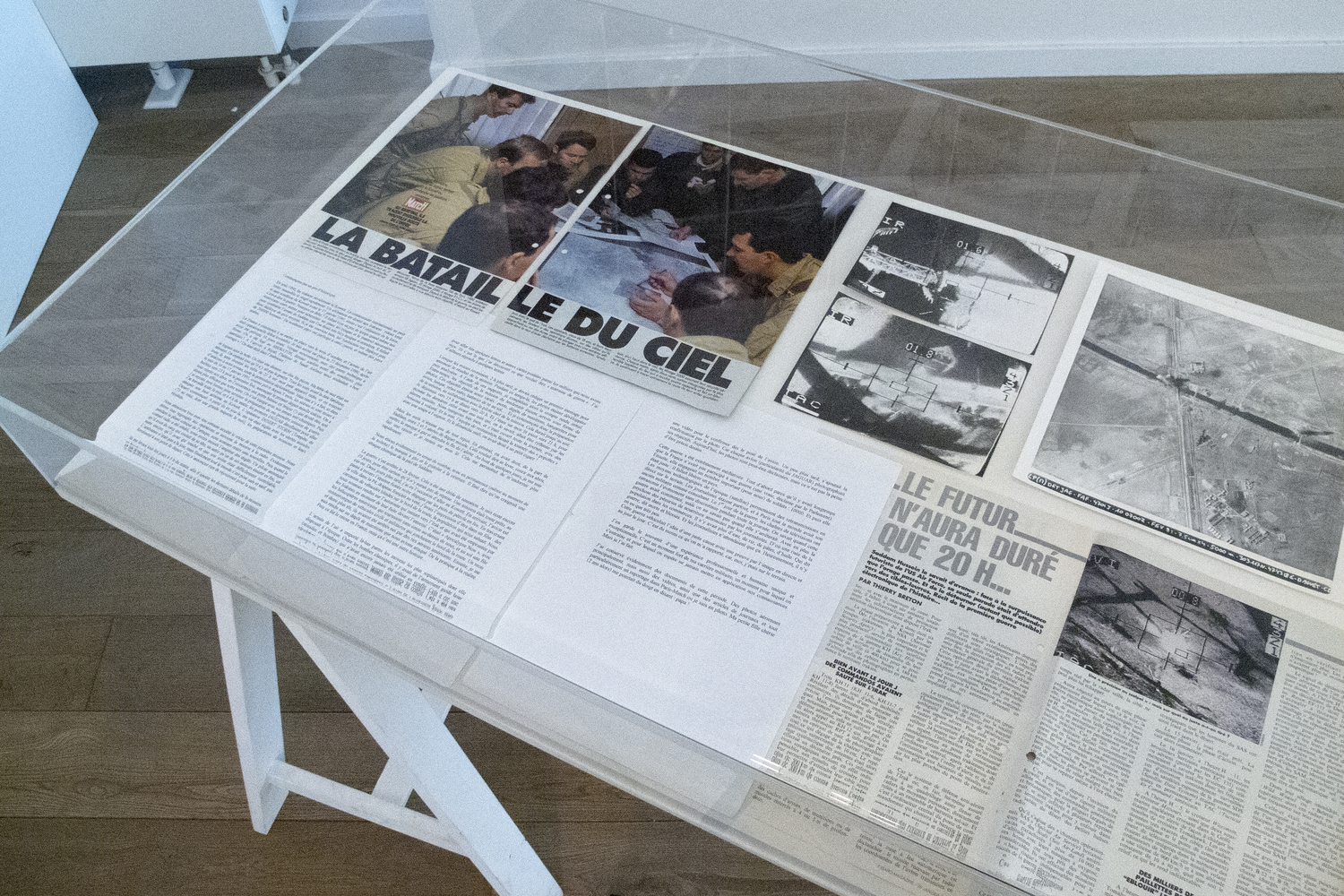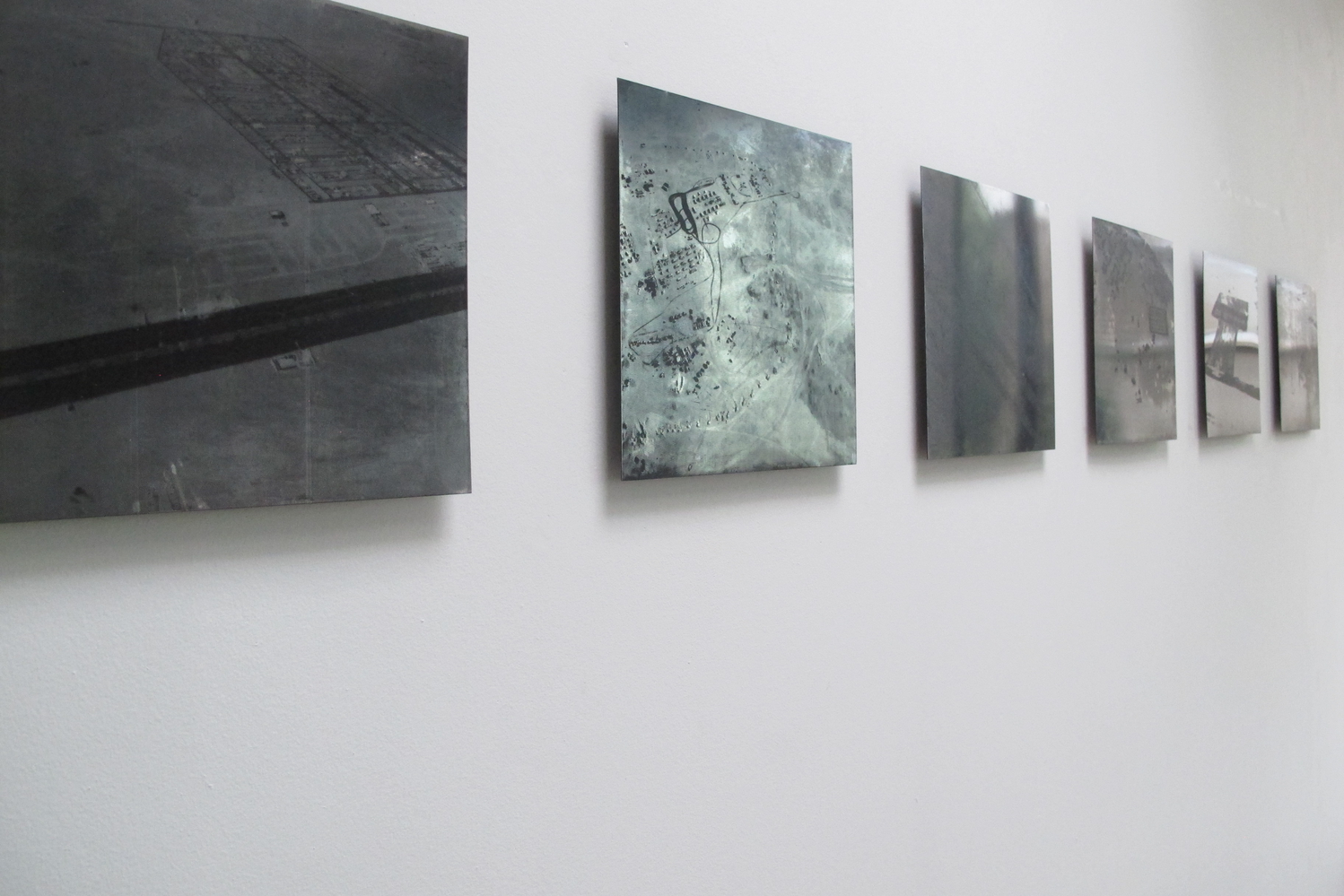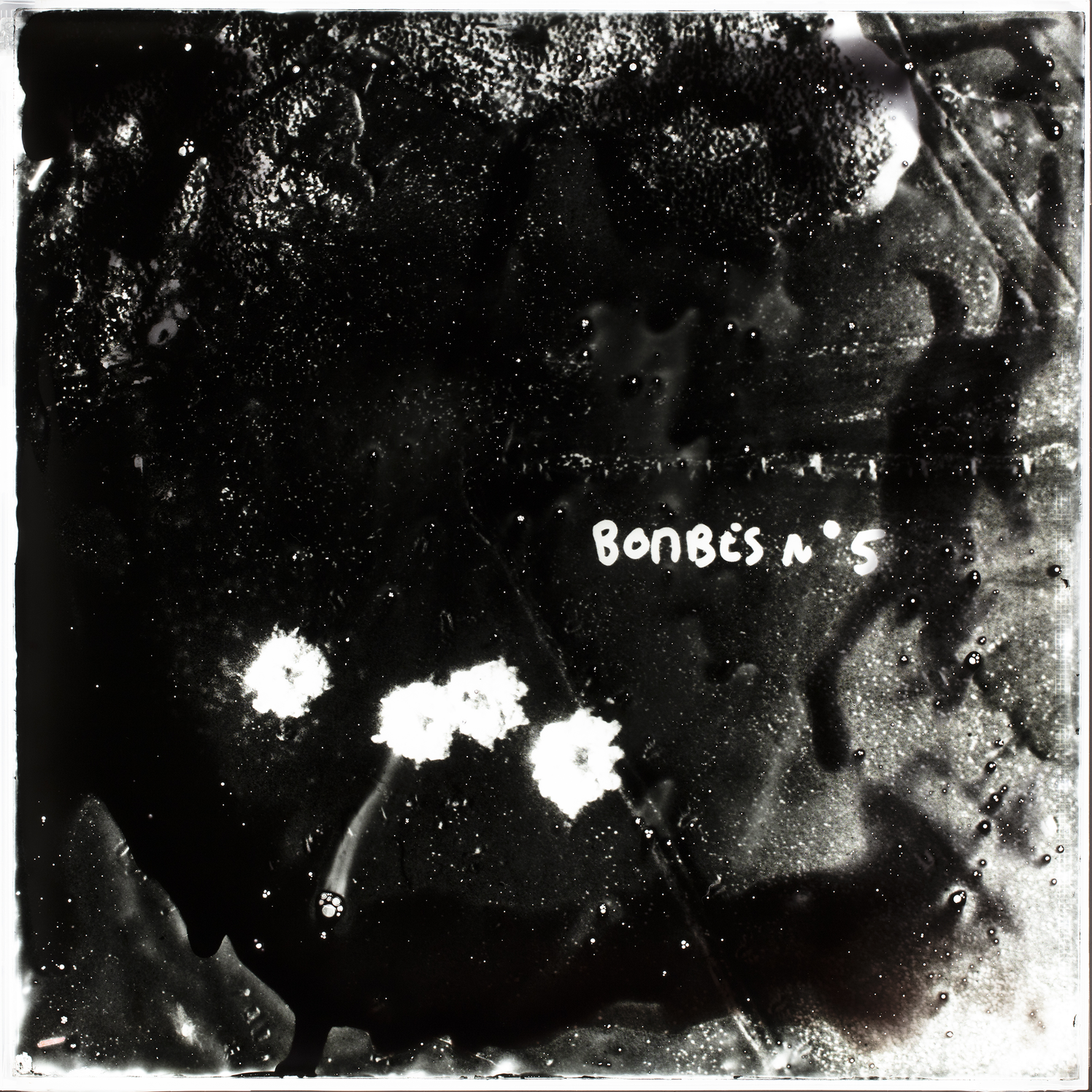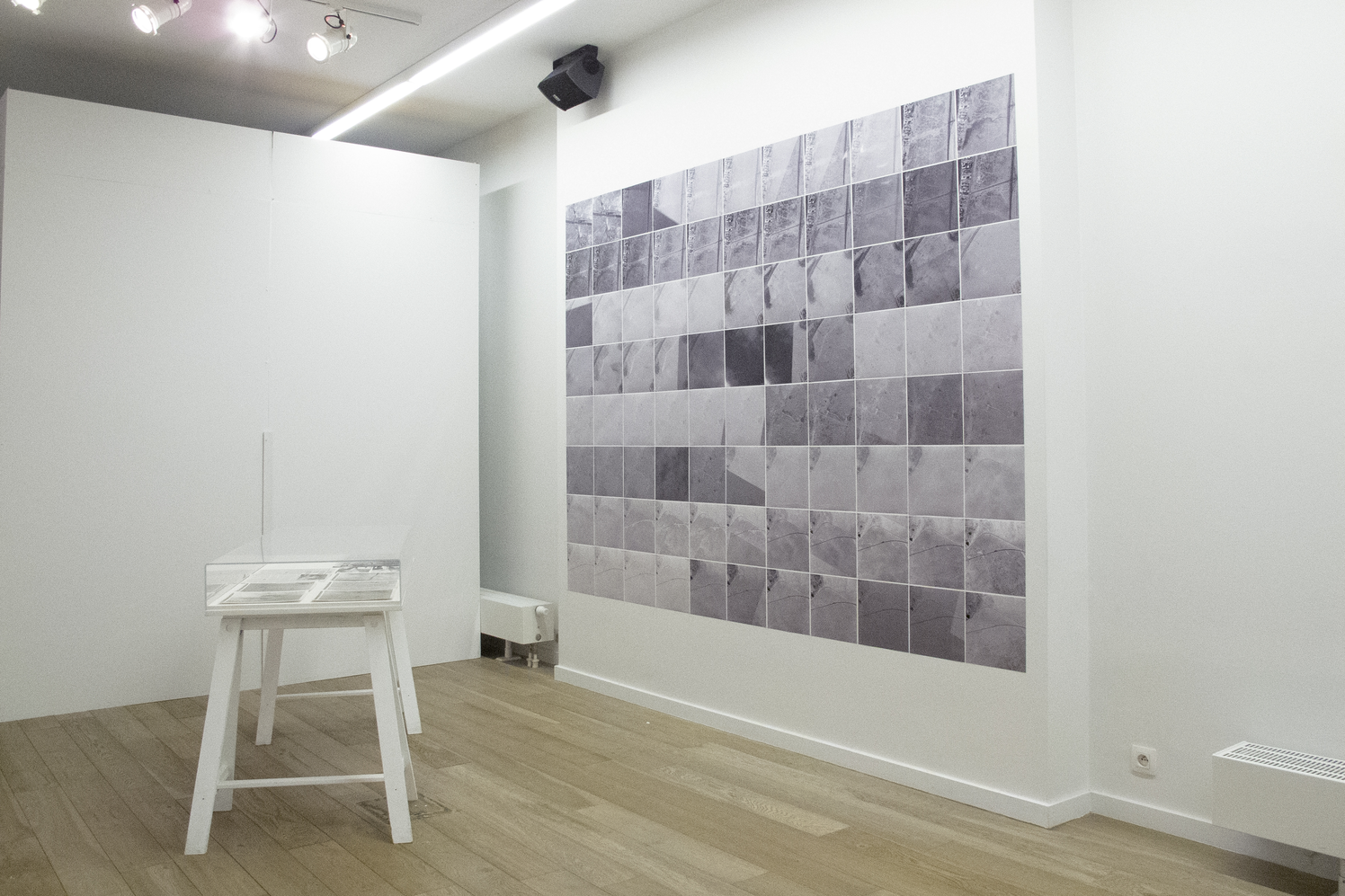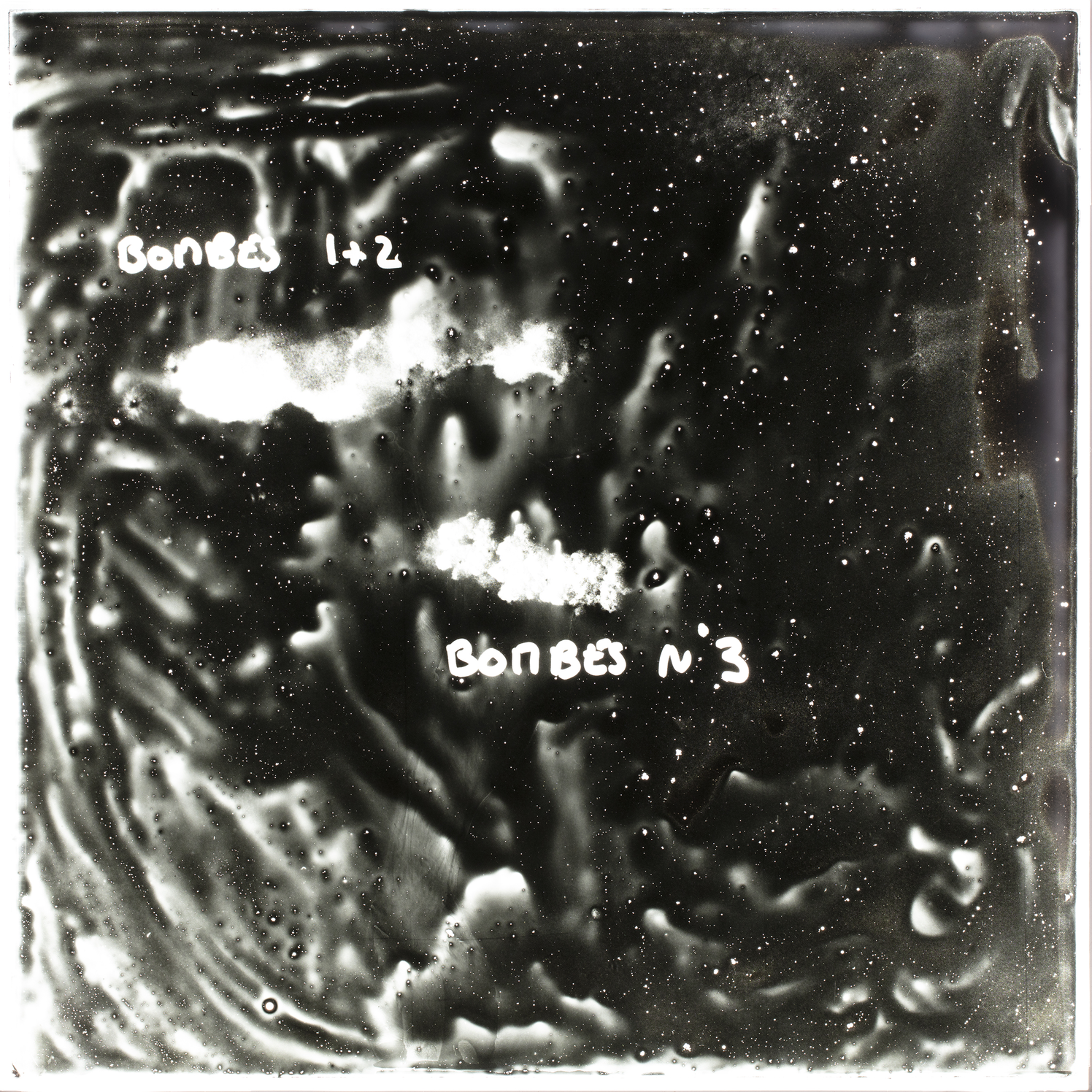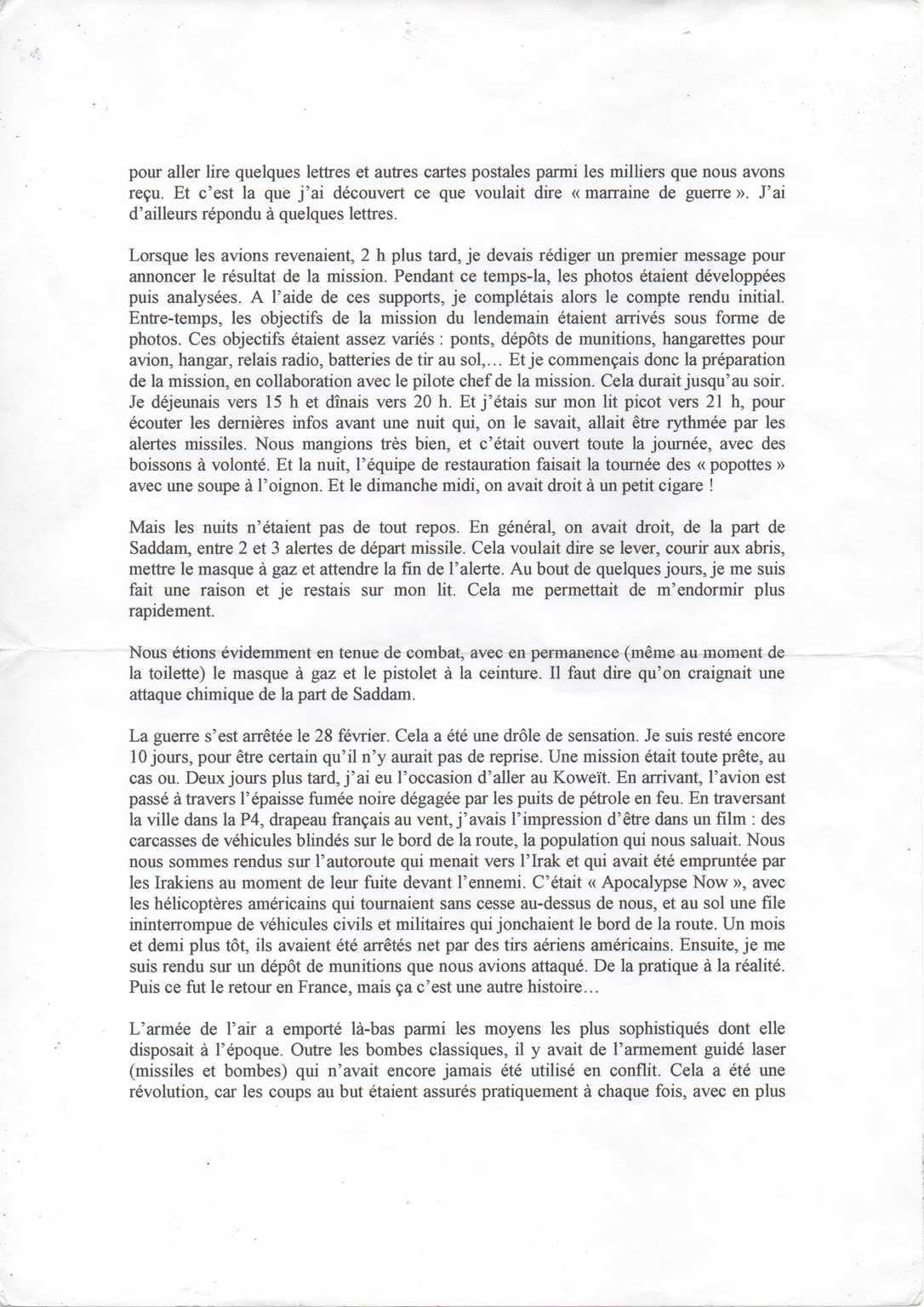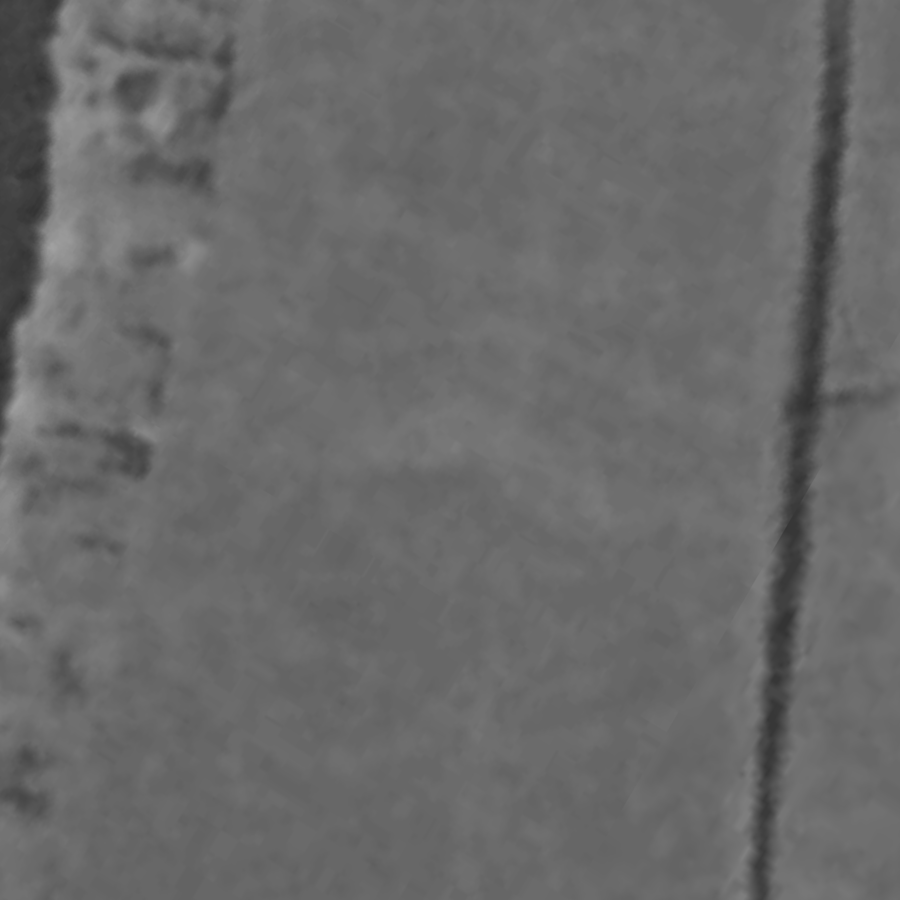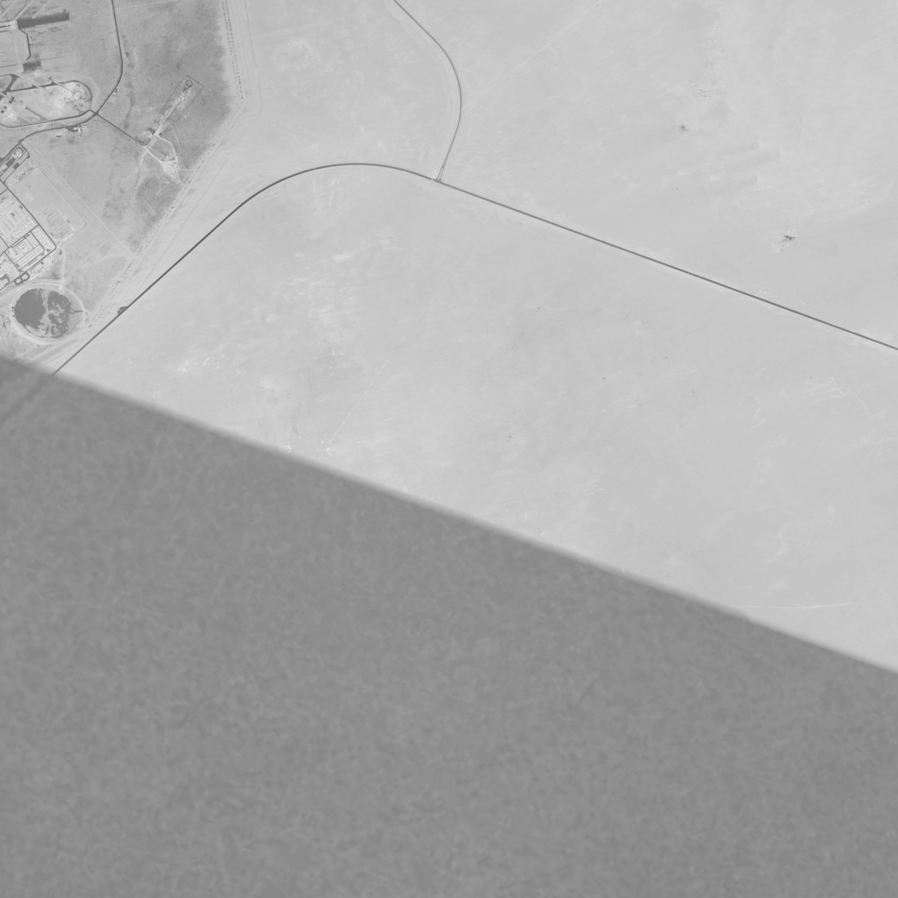Insert military pictures in the field of art and creation is something indicative because its permits to make uncertain nature of war photographs evident, inability to understand and illusion to understand events around us. To understand an image and understand what we see of and in the image requires to educate our eyes. This is particularly that dimension which calls to my mind with archives from the First Gulf War. Abstract pictures, grey, taken by plane, I was totally unable to decipher and analyse them, because aerial view seems to prevent to see war reality. I was facing documents which were only reserved to specialist, produced in a military context, by military machine and for military expert. For him, the document has a usefulness he needs to grasp, media transform the document in picture, while the artist shows us deprivation of the world in front of a strangely quiet surface.
Today, showing the war, or trying to propose another approach about its representation leads us to think war violence as factors which have an effect on look’s total disappearance. That disappearance go hand in hand with almost total dehumanization too, of what constitute contemporary conflicts. Paradoxically, «La première victime d’une guerre c’est le concept de réalité »1 said philosopher Paul Virilio. Make the invisible perceptible, attempt to indefinitely understand this imagery could be both military and artistic ambition of a space: the image constant conquest.
1. Paul Virilio, Guerre et cinéma I, Logistique de la perception, Les cahiers du cinéma, éditions de l’Etoile, Paris, 1984, p.44.
The question of image in the field of war is more than anything in news. On the basis of a simple analysis, the one of necessity we have to document the world by way of images, we can confirm that this one is today subject to different visibility trajectories that make us to invent new ways to see and to think history. With tools development of production and diffusion we experiment daily, it is urgent to propose another look on that kind of documents. I consider that other look as decentre, dé-subjectivé, which question the intention and the position of the author in the fabrication and production process itself of that documents. Then, what can we say about the truth? By documenting the world, we create images and archives that reorientate the sense and the origin of these documents. The difference between image we make without particular intention and image meant to be an archive create a distance with the author, who disappears when image is no longer consider for what it was produced. The dé-subjectivation concept obviously mentions decisive ethical questions, but not only, question of responsibility too, responsibility of soldiers, politicians, journalists, but also artists when they work with this material.
War must be thinking in relation to our look. Since the First Gulf War in 1991, conflict which has caused a rupture in the manner of thinking and depicting the war, the world is became a very big screen, on which a stream of images seems to keep coming non-stop, faster and faster. Image of war, as it was thought, shown, imagined until then, will never be the same. Conflict in the Gulf didn’t show anything. « On n’a rien vu » ("We didn't saw anything") are the most employed words to describe that war, whose representation was totally missing. With information control, connection between the war and news were disrupted once and for all. Conflict from the end of the 20e century, the First Gulf War gives us a new way to think the world in light of triangular link between image, propaganda and democracy, whose concentrated itself all the issues. In touch with the news and the truth validity of the information, then, where was the place of the image in this conflict?
I produced all my projects about the Gulf War between 2009 and 2019, and according to the information I collected about these documents. Next, long talks with my father bring determining elements to understand these military photographs.
The project “Reconnaissance” was developed according to several photographic method, from large format camera, to digitalization or image transfers on glass plates. I produced a part of my project on spectroscopic glass plates, which are originally used to photograph the sky. I made picture transfers of my personal archives on it, adapting the photographic development process by accomplishing everything by hands, using emulsion applied on the glass (series of 26). Another part of my search leads me to use a specific visual protocol used by the army during the First World War, the “before and after” principle. For that, I crossed my work with recent satellite imagery of the Gulf region on Google Earth program, in order to create a great cartography of Iraq and Kuwait in the last years and composed by a series of 88 images, while creating my own archives from these territories.
I have handled, studied, analysed, deciphered and exhausted these personal archives…
The interest and ambition of this great project was to cross several disciplines, and questioning the link between creation of an image, a picture, and its device of presentation, which can change our perception way.
By crossing several domains, as art, social sciences or geopolitics, this project looks like a great investigation and these different elements composed, together, another picture that question the representation of our time and our society. By using these archives in my personal work, it’s like pull their private and emotional aspect out to propose a public reflexion.
Detail -
5 images from the "Before & After" project. They represent Iraq and Kuwait landscape photographed by Google Earth software between 2002 and 2005.
1. February 27th 2002
2. January 14th 2005
3. January 4th 2005
4. July 30th 2004
5. July 16th 2002
"Before & After", 88 images from Google Earth software program, digital prints, 269 x 195,5 cm, view of the exhibition "La guerre imag(in)ée" at Peinture Fraiche gallery, Brussels, 2017.
During one year, I've developed my research in partnership with an astronomy laboratory in Brussels, specializing in archive’s digitalization. I realized this photographic project on spectroscopic glass plates, which are specific plates originally used to photograph the sky. I made picture transfers of my personal archives on blank glass plates from this laboratory, adapting the photographic development process by accomplishing everything by hands, using emulsion applied on the glass.
Crossing these two supports, photography and glass, with both the influence of astronomy science and war perception, I propose another expression about war photography, and wonder about the way that this type of military images are produced and for what intend.
Through military archive from the first Gulf War and geographic coordinates of 5 bombing places which take place during this conflict between Iraq and Kuwait, i explore on Google Earth those territories to notice the geographical and topographical modifications, according to images produced by the software between 2002 and 2016. The whole serie put together 88 images, and question the link between automatic conception of images by machines and the way that they circulate today in different context.
This document, a personal archive, is a report published in Paris Match magazine on February 7th 1991. My father is on the image, preparing reconnaissance tasks for fighter planes. This picture represents the first thing I remember of that conflict.
Personal military archives, serie of 9 photoengraving on polished steel, 30x30 cm, 2014. View from the exhibition "Reconnaissance" at Eté78 Gallery, Brussels, 2020.
Display case of personal archives, view of the exhibition "Reconnaissance" at Eté78 gallery, Brussels, 2020.
The text, in 3 pages, is a text written by my father, as a testimony. In 2009, when I discovered all the archives from the First Gulf War in my parent’s house, I asked him to write me a text to explain how he has lived the war, what was his everyday life, his work, his experience.
"Irak-Koweït, 1991", prints on paper. View from the exhibition "La guerre imag(in)ée" at Peinture Fraiche gallery, Brussels, 2017.
"Etat", detail. Personal military archives, transfer on spectroscopic glass plates, photographic emulsion, 30 x 30 cm, 2018/2019.
"Etat", detail. Personal military archives, transfer on spectroscopic glass plates, photographic emulsion, 30 x 30 cm, 2018/2019.
"Irak-Koweït, 1991", detail. View from the exhibition "La guerre imag(in)ée" at Peinture Fraiche gallery, Brussels, 2017.
Display case of personal archives, view of the exhibition "Reconnaissance" at Eté78 gallery, Brussels, 2020.
Bind to different type of war representation and to my personal experience, a part of my research begins in 2009 when i discovered military archives from the first Gulf War (1991) and belonging to my father, who was a soldier. Pictures, newspapers, videos... by using that specific documents, I have been interested in the way whose war can be, today, considers as a vast perception field which has a real impact on our visual environment. With these images, I studied the different visibility system at work in conflict representation, trying to understand how the war can allows to show about itself, through the pictures it produces and conveys. From this, it’s also a reflexion that concerns the place and the role of the artists’ handiwork, when they work whith that type of documents.

